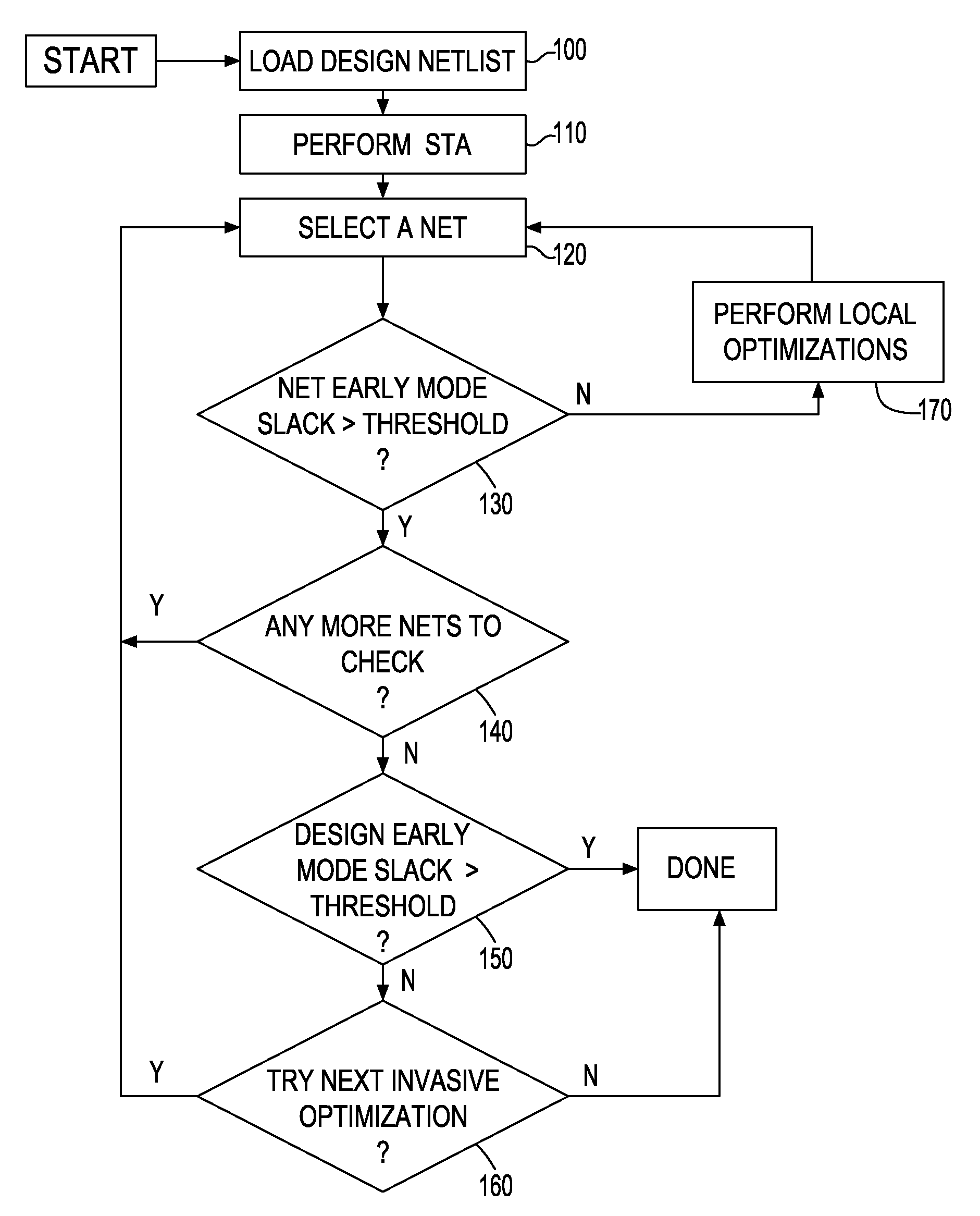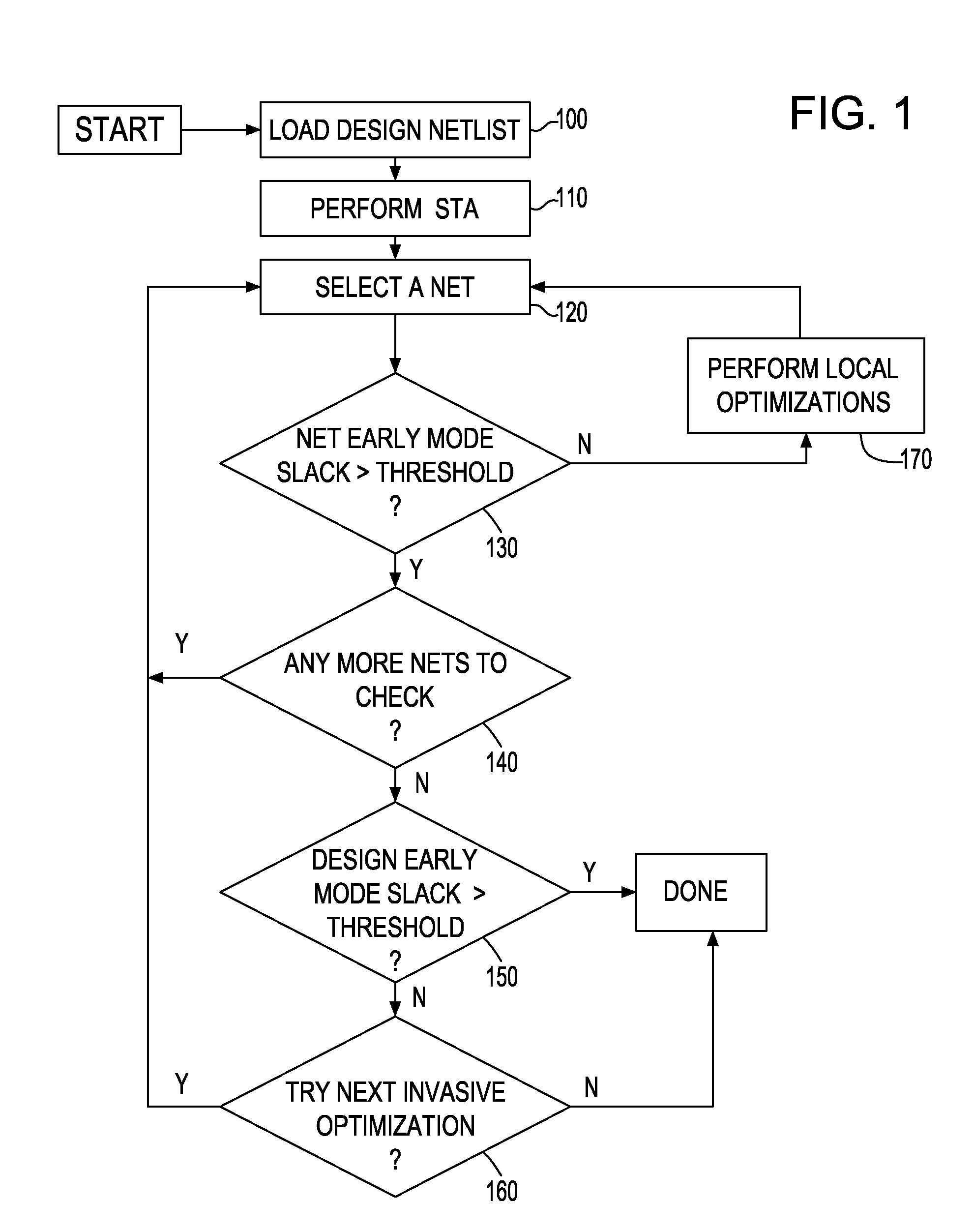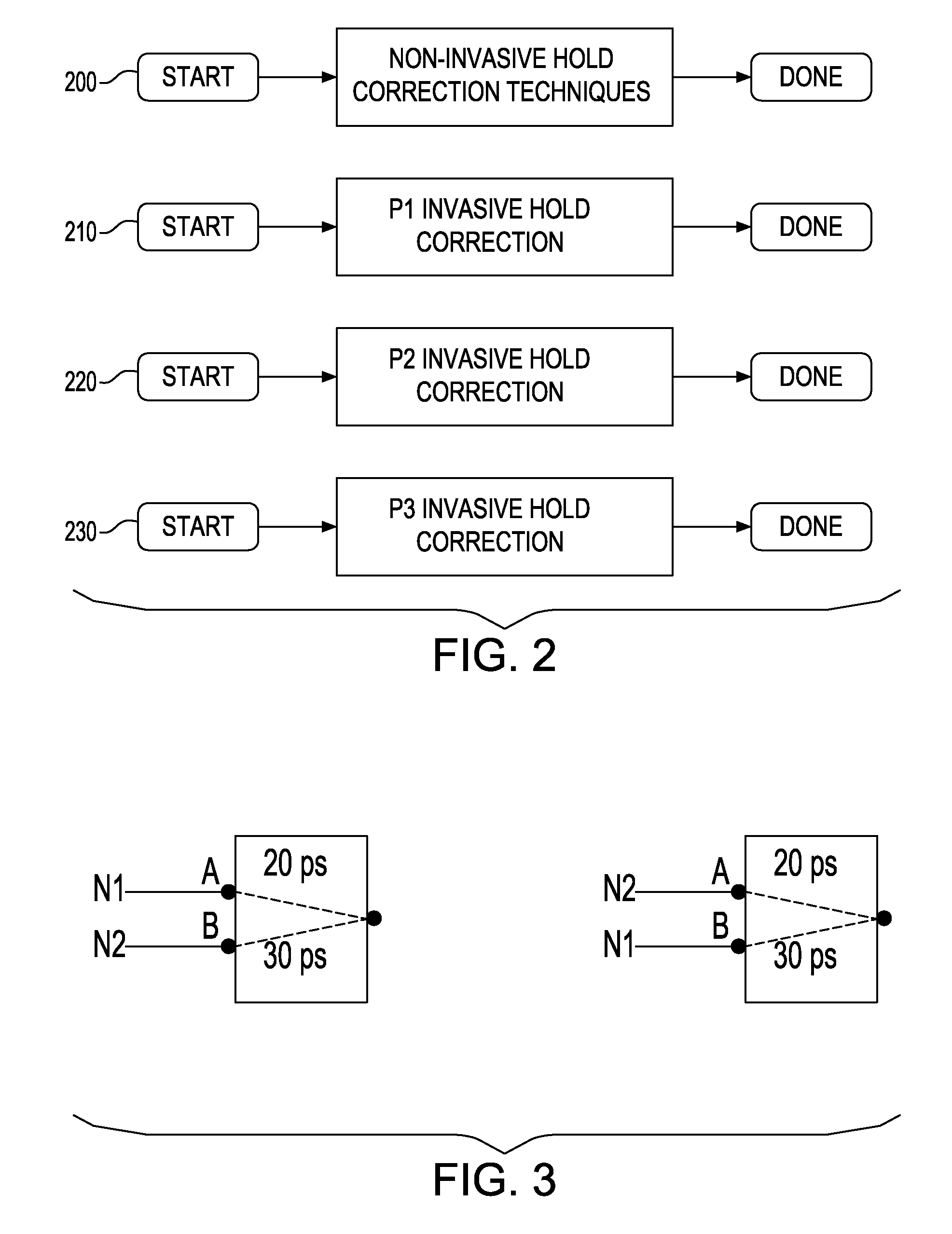Method of minimizing early-mode violations causing minimum impact to a chip design
a technology of early-mode violations and chip design, applied in the field of methods, can solve the problems of reducing the quality of the design with respect to area, power and routability, and the difficulty of correcting early-mode violations, so as to reduce the impact on already completed work, effectively delay the fast path, and optimize the design
- Summary
- Abstract
- Description
- Claims
- Application Information
AI Technical Summary
Benefits of technology
Problems solved by technology
Method used
Image
Examples
Embodiment Construction
[0038]The accompanying drawings, which are incorporated herein and which constitute part of the specification, illustrate the presently preferred embodiments of the invention which, together with the general description given above and the detailed description of the preferred embodiments given below serve to explain the principles of the invention.
[0039]Referring now to FIG. 1, in one embodiment of the invention, the design optimization or correction process starts by loading a design netlist, step 100. A conventional static timing analysis (STA) is then performed in step 110 using estimated net capacitances or extracted detailed parasitics. In step 120, an iterative process is initiated, checking and correcting nets by selecting a first net on which to operate. The selection may be done by choosing, one by one, all nets of the design, or by restricting the process to nets having a slack that is less than a predetermined threshold. As local optimizations are performed in step 150, ...
PUM
 Login to View More
Login to View More Abstract
Description
Claims
Application Information
 Login to View More
Login to View More - R&D
- Intellectual Property
- Life Sciences
- Materials
- Tech Scout
- Unparalleled Data Quality
- Higher Quality Content
- 60% Fewer Hallucinations
Browse by: Latest US Patents, China's latest patents, Technical Efficacy Thesaurus, Application Domain, Technology Topic, Popular Technical Reports.
© 2025 PatSnap. All rights reserved.Legal|Privacy policy|Modern Slavery Act Transparency Statement|Sitemap|About US| Contact US: help@patsnap.com



